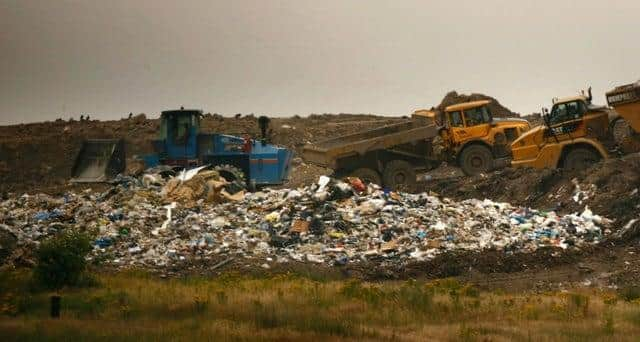Industrial greenhouse gas emissions down overall but rise for waste sector
New data from the Scottish Environment Protection Agency (Sepa) shows emissions of carbon dioxide and methane, the biggest drivers of global warming, dropped by 57 per cent and 44 per cent respectively between 2010 and 2019.
The reductions were largely due to the move in recent years away from fossil fuels for energy generation, with the closure of Scotland’s last coal-fired power station in 2016.
Advertisement
Hide AdAdvertisement
Hide AdCarbon dioxide emissions from the sector have fallen by around 70 per cent since 2010 as a result.


Carbon dioxide fell by five percent and methane by four percent from 2018 to 2019.
But as emissions from the energy sector have fallen, releases from other sectors now form a greater proportion of the greenhouse gas emissions reported to the environmental regulator.
Direct emissions from waste and waste-water management facilities increased by 76 per cent over the decade, with carbon dioxide emissions from incineration sites up 83 per cent.
This rise was partly driven by a switch towards burning unrecyclable waste instead of sending it to landfill.
A total of three million tonnes of rubbish was buried in 2019, a 20 per cent cut from the year before and 57 per cent lower than in 2005.
Meanwhile, 1.23 million tonnes was incinerated, an increase of 72 per cent from 2018 and 200 per cent since 2011.
This was largely due to a jump in the amount of household and similar wastes burned, rising by 131 per cent from 2018 to 330,368 tonnes in 2019.
Advertisement
Hide AdAdvertisement
Hide AdThis does not include waste that has been segregated into recycling bins, only that which has gone into general bins.
Terry A’Hearn, chief executive of Sepa, said: “These experimental official statistics chart the progress we’ve made as a nation with our globally ambitious climate change targets, with some pollutants emitted from regulated businesses falling in the last decade.
“They also reflect the realism of a modern, Western European economy in transition.
“The successful businesses of tomorrow will be those that are sustainable.
“As Scotland’s environmental regulator, our firm focus remains on helping Scottish businesses innovate and emerge stronger and more sustainably from the current public health pandemic, enabling leadership in a decade of climate emergency.”
A message from the Editor:
Thank you for reading this story on our website. While I have your attention, I also have an important request to make of you.
The dramatic events of 2020 are having a major impact on many of our advertisers - and consequently the revenue we receive. We are now more reliant than ever on you taking out a digital subscription to support our journalism.
Subscribe to scotsman.com and enjoy unlimited access to Scottish news and information online and on our app. Visit https://www.scotsman.com/subscriptions now to sign up.
By supporting us, we are able to support you in providing trusted, fact-checked content for this website.
Joy Yates
Editorial Director
Comments
Want to join the conversation? Please or to comment on this article.